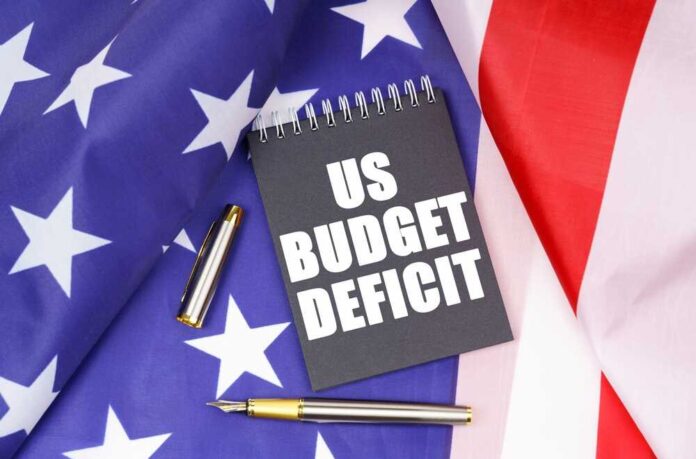
On Friday, the U.S. government announced a budget deficit of $1.695 trillion for fiscal 2023, marking a 23 percent increase from the previous year. This substantial rise is attributed to decreased revenues and increased expenditures on Social Security, Medicare, and interest on national debt.
The Treasury Department highlighted that this is the most significant deficit since the $2.78 trillion gap in 2021, a consequence of the COVID-19 pandemic. This comes after President Joe Biden’s administration witnessed consecutive declines in deficits during his initial two years in office.
This substantial deficit emerges as President Biden seeks Congressional approval for an additional $100 billion towards foreign aid and security, which includes $60 billion for Ukraine and $14 billion for Israel. Funds are also being allocated for U.S. border security and activities in the Indo-Pacific.
This fiscal gap surpasses all previous non-pandemic-related deficits, including those resulting from tax cuts during President Donald Trump’s tenure and the financial downturn.
The size of this deficit is expected to intensify fiscal disputes between President Biden and the Republican members of the House of Representatives. The latter’s insistence on expenditure reductions previously led the country close to default due to debt ceiling disagreements in early June.
Further complicating the fiscal landscape was the removal of the U.S. House Speaker, Kevin McCarthy, due to his agreement to avoid a government closure against the wishes of staunch Republican factions. With the Republicans currently undecided on leadership, upcoming negotiations ahead of the mid-November fiscal deadline are anticipated to be challenging.
Several U.S. presidents have overseen a doubling of the national debt during their terms, especially in more recent decades, as the absolute dollar amount of the debt has grown:
Ronald Reagan (1981-1989): The national debt nearly tripled during Reagan’s two terms, from about $1 trillion to almost $3 trillion.
George W. Bush (2001-2009): The national debt increased from around $5.7 trillion to over $10 trillion during his tenure, partly due to tax cuts, increased military spending for the Iraq and Afghanistan wars, and the financial crisis.
Barack Obama (2009-2017): Starting his term during the Great Recession, the national debt grew from around $10 trillion to nearly $20 trillion by the end of his two terms, driven by stimulus spending, tax cuts, and other policies to combat the economic downturn, as well as the continuation of foreign military operations.














